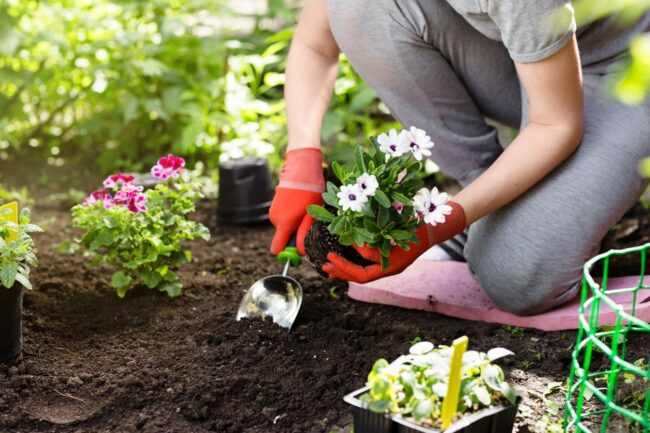During the tumultuous journey that is cancer rehabilitation, finding solace and renewal can often seem like an elusive endeavor. Yet, amidst the chaos, the garden is a sanctuary where healing and growth intertwine. Gardening therapy, a form of horticultural intervention, offers cancer survivors a unique pathway to physical, emotional, and spiritual rejuvenation.
In this blog, John R. Callen delves into the transformative power of gardening therapy, exploring how cultivating plants and nurturing nature can foster hope and renewal in those navigating the complexities of cancer recovery.
The Healing Garden
A Sanctuary of Growth and Renewal: Gardens have long served as sanctuaries of serenity and renewal, offering respite from the stresses of daily life and opportunities for connection with the natural world. In the context of cancer rehabilitation, the therapeutic potential of gardens is magnified, providing survivors with a safe and nurturing environment to embark on their healing journey.
- Physical Rehabilitation: Engaging in gardening activities, such as planting, weeding, watering, and harvesting, offers survivors opportunities for physical activity and rehabilitation. These tasks promote range of motion, strength, and coordination, facilitating the restoration of physical function and mobility compromised by cancer treatment. Moreover, spending time outdoors exposes survivors to natural sunlight, which can enhance vitamin D production and improve overall well-being.
- Emotional Healing and Stress Reduction: The act of gardening has been shown to reduce stress levels, alleviate anxiety, and elevate mood through its calming and grounding effects. Immersing oneself in the sights, sounds, and scents of the garden fosters a sense of mindfulness and presence, allowing survivors to temporarily escape the burdens of their illness and connect with the beauty and vitality of nature. Whether tending to vibrant flowers, nurturing vegetable gardens, or simply sitting amidst the greenery, survivors find solace and comfort in the therapeutic embrace of the garden.
- Cultivating Hope and Resilience: Gardening embodies the essence of growth, renewal, and resilience, mirroring the journey of cancer recovery. Witnessing the transformation of seeds into flourishing plants symbolizes the potential for healing and renewal within oneself. As survivors nurture and care for their garden, they cultivate a sense of purpose, agency, and optimism, embracing the cycle of life and finding hope in the midst of adversity. The garden becomes a tangible manifestation of resilience, reminding survivors of their capacity to overcome challenges and flourish amidst adversity.
- Connection with Nature and Community: Gardening fosters a deep connection with the natural world, inviting survivors to engage their senses and attune to the rhythms of the earth. Whether planting in communal gardens, participating in horticultural therapy sessions, or sharing gardening tips and stories with fellow survivors, the garden becomes a locus of connection and community. Through shared experiences and mutual support, survivors find solace, camaraderie, and strength in the companionship of others walking similar paths.
In the soil of the garden, amidst the tender shoots and blossoming blooms, lies a profound truth: amidst the trials of cancer rehabilitation, hope and renewal can take root and flourish. Gardening therapy offers survivors a sacred space to nurture their bodies, heal their hearts, and nourish their souls. As survivors dig, plant, and tend to their gardens, they unearth a reservoir of resilience, discovering that amidst the garden’s fertile soil, seeds of hope and renewal await to be sown. May we all find solace and inspiration in the healing embrace of the garden, cultivating a tapestry of hope and renewal in the landscape of our lives.
